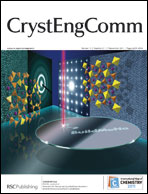A crystal engineering weaving of half-spiral molecules by hydrogen bonding chains into tube structures†‡
Abstract
Double-headed trifluorolactate (1) (benzene-1,3-(S,S)-bis(butyl-3,3,3-trifluorolactate), is composed of a bundle of tubes held together by two lines of infinite hydrogen bonding chains. Two neighboring hydrogen-bonded molecules on the same hydrogen bonding chain are not connected directly to the other hydrogen bonding chain. That is, the tube structure cannot be composed by simple layer stacks.


 Please wait while we load your content...
Please wait while we load your content...